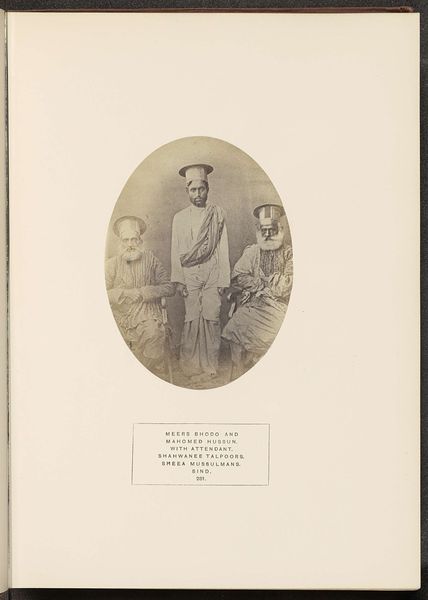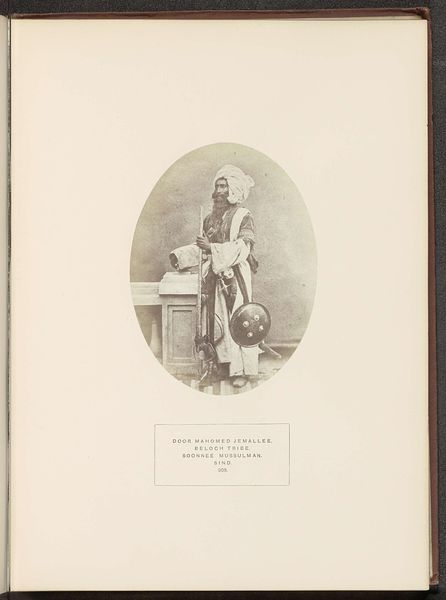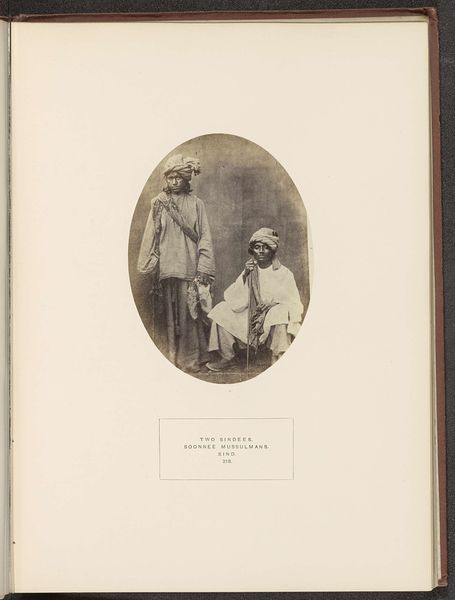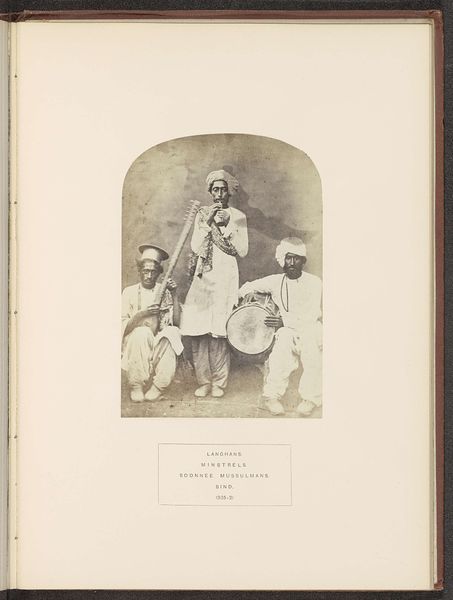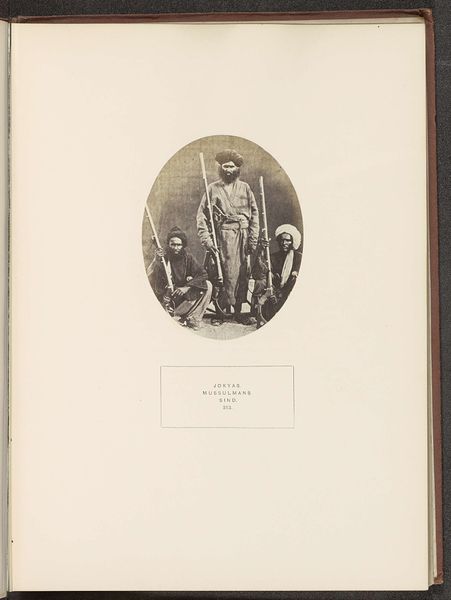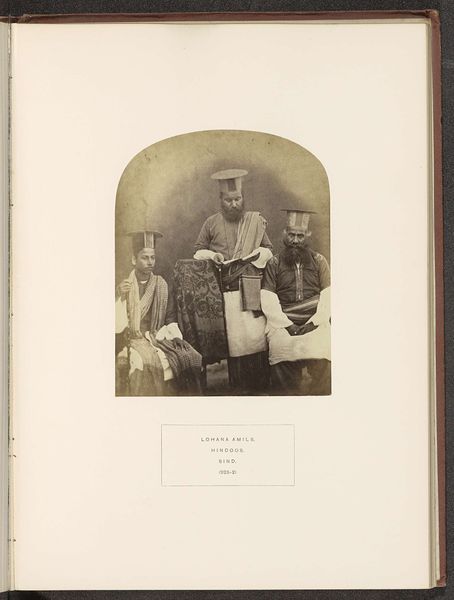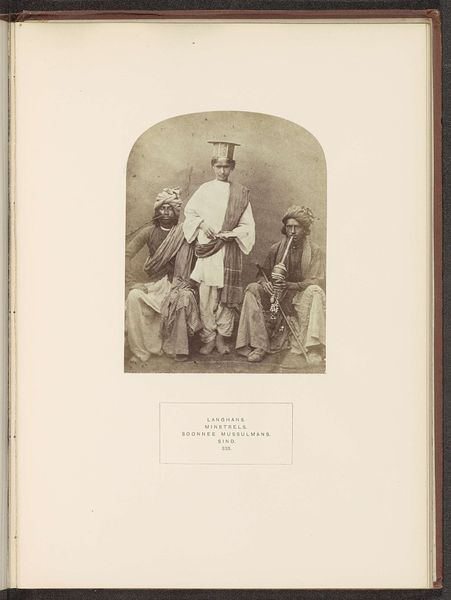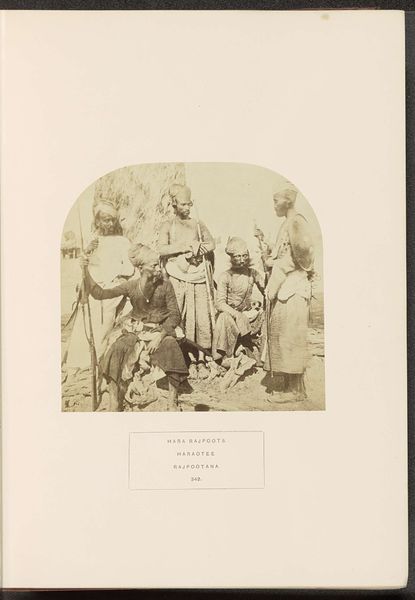
photography, albumen-print
#
portrait
#
photography
#
islamic-art
#
albumen-print
Dimensions: height 159 mm, width 121 mm
Copyright: Rijks Museum: Open Domain
This portrait of Gholam Mahomed and his brothers was made by Henry Charles Baskerville Tanner, likely in the 19th century. The photograph's creation involved a complex dance of chemistry and optics, transforming light reflected off the subjects into a lasting image on a treated surface. Consider the photographer's labor. Tanner would have been an expert in the manipulation of materials, preparing solutions, timing exposures, and controlling every aspect of the darkroom process. Each print was a unique artifact, demanding a high level of skill. Photographs like this one circulated widely, shaping perceptions of people and places far removed from the viewer's everyday experience. The very act of capturing and disseminating images had social and political implications, influencing how cultures understood one another. By recognizing the labor, materials, and context involved, we gain a deeper understanding of the photograph's meaning and its place in the world.
Comments
No comments
Be the first to comment and join the conversation on the ultimate creative platform.
